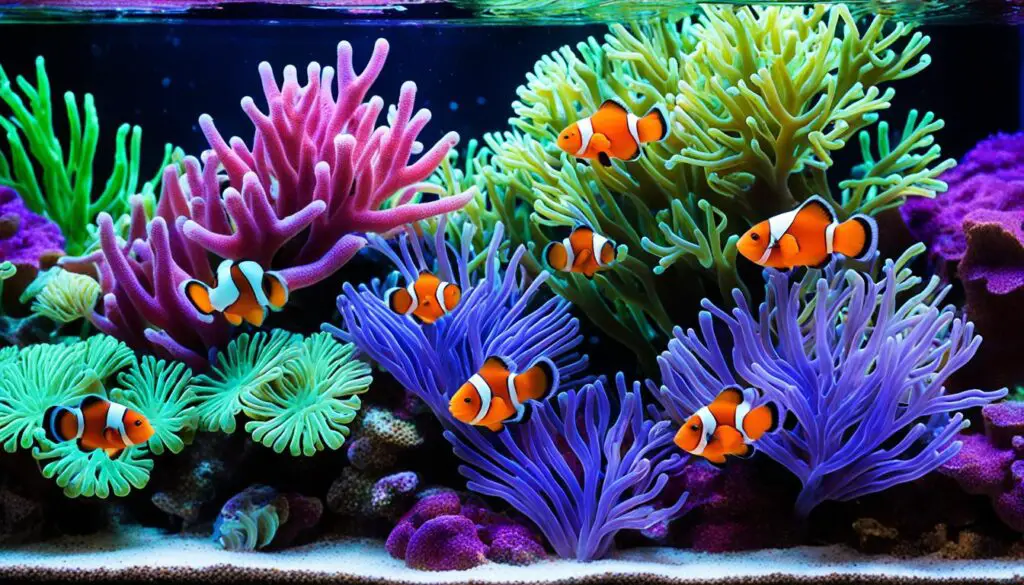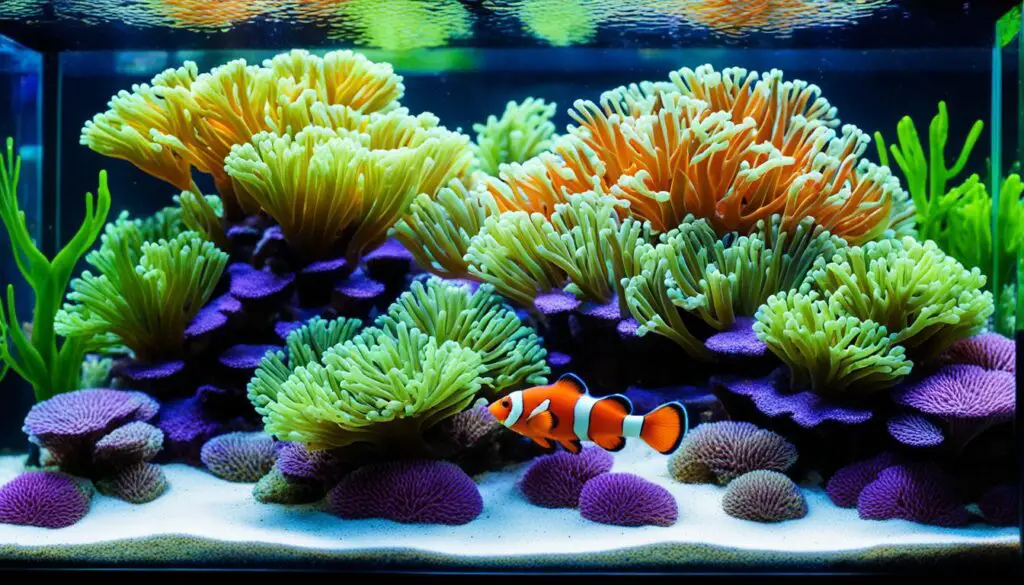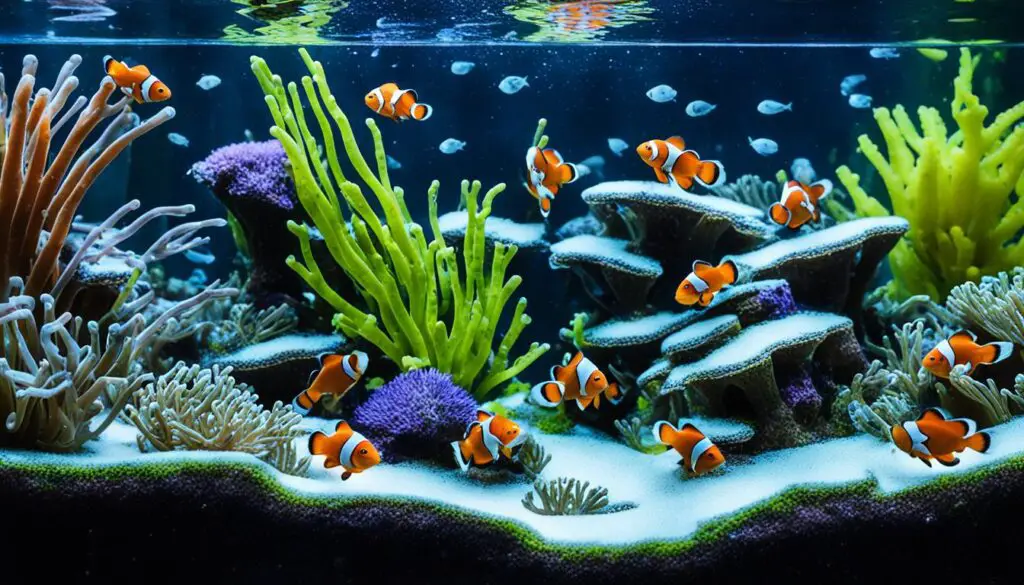Algae Control in Clownfish Tanks: Strategies for Success
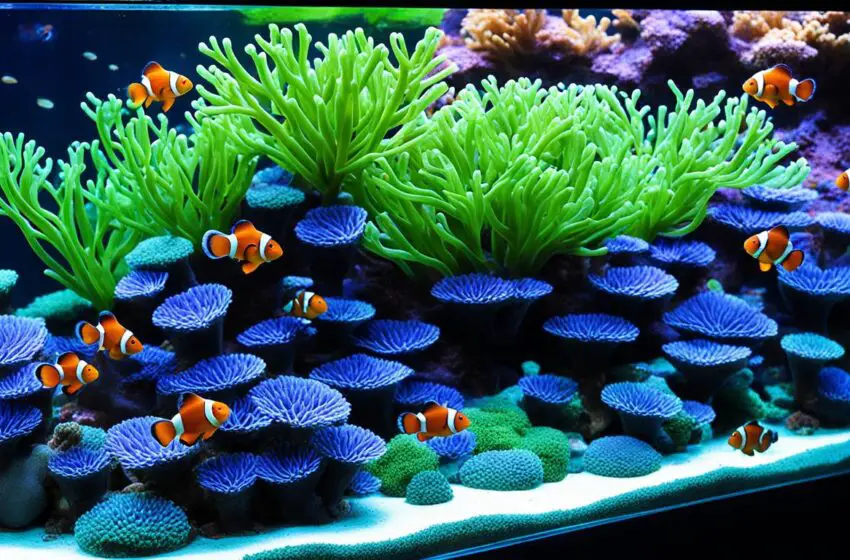
Keeping your clownfish tank free of algae is key to their health and looks. Algae not only ruins the tank’s appearance but can harm your fish. Yet, you can make a great home for your clownfish by controlling algae well.
Several things can cause nuisance algae to grow in your tank. The quality of your water and what’s in it matters. Also, the state of your tank’s rocks and bottom, the light, and how the water moves can help algae grow fast. Even how much you feed your fish affects algae levels.
To avoid algae, you must keep an eye on water factors. Test for things like nitrates and phosphates that feed algae. With good care, like regular water changes and using special filters, you can keep these nutrients low and stop algae from taking over.
Stick to these tips and stay ahead of algae, so it doesn’t ruin your clownfish’s tank. A clean, algae-free space will let your fish shine and make you happy for a long time.
Key Takeaways:
- Controlling algae in your clownfish tank is essential for maintaining a clean and healthy environment.
- Factors such as source water quality, rock and substrate condition, lighting setup, tank flow, and feeding habits can contribute to algae growth.
- Regular testing and maintenance of water parameters, including nutrient control measures, are crucial in preventing algae issues.
- Implementing practices such as water changes and the use of chemical media can help maintain proper nutrient levels.
- A proactive approach to algae control will create a thriving and beautiful ecosystem for your clownfish.
Factors Contributing to Nuisance Algae Growth
Many things can lead to nuisance algae growth in your clownfish tank. The type of water you use is a big factor. It’s best to use RO/DI (reverse osmosis/deionization) water to keep your tank free from bad stuff. Make sure the rocks and substrate are clean, too, without any hidden nutrients.
Good lighting is key for algae control. You need the right PAR (photosynthetic active radiation), light schedule, and type to encourage good algae and stop the bad kind.
Having a steady water flow in your tank is important. This stops algae from growing in places where water stands still.
Feeding your clownfish right is crucial for keeping algae at bay. Give them enough food, but be careful not to overfeed. This will stop extra waste from adding to the nutrients in your tank that feed algae.
You must control the nutrients in your tank. Doing water changes often takes out extra nutrients. Using a GFO (granular ferric oxide) or GAC (granular activated carbon) reactor can also help. A refugium or adding macroalgae can naturally lower nutrients, too.
It’s also key to test your water and keep the conditions near natural seawater. This helps stop algae from growing too much. If the water quality isn’t right, you can spot it early and fix it.
Factors Contributing to Nuisance Algae Growth Table
| Factor | Description |
|---|---|
| Source Water Quality | Using RO/DI water to eliminate unwanted contaminants |
| Rock and Substrate Condition | Properly cured and nutrient-free |
| Lighting | Optimal PAR, schedule, and spectrum |
| Flow | Adequate water flow to prevent stagnant areas |
| Feeding Habits | Providing enough food without excess waste hitting the rock or substrate |
| Nutrient Control | Water changes, GFO/GAC reactor, refugium or macroalgae |
| Water Parameter Maintenance | Regular testing and dosing to maintain parameters close to natural seawater |
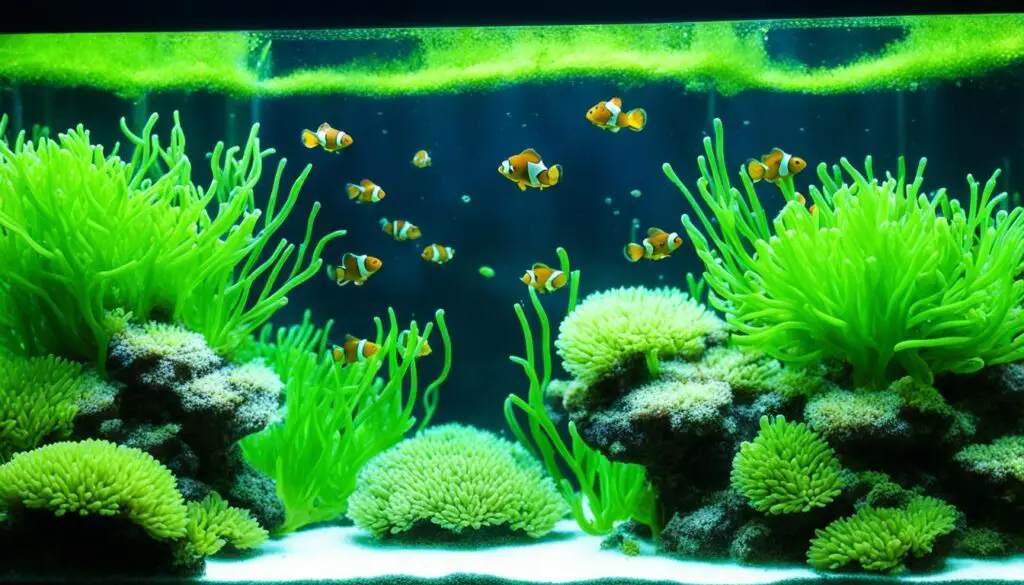
To keep your clownfish tank algae-free, address these factors. This will help you create a spotless and healthy home for your marine friends.
Preventing Algae Introduction and Growth
Nuisance algae can sneak into your clownfish tank from many places. This can harm your aquarium’s look and the fish’s health. Algae can enter through various means, such as live rock, fish, food, and even the air.
It might be hard to stop algae entirely. But, there are steps you can take to lower the chances of having too much algae. For instance, check all new fish and plants for algae before adding them. Also, using a quarantine tank can catch algae problems early.
To stop algae from growing, remove it by hand from the tank. Do this regularly to keep your tank looking clean. This will also stop algae from taking over your tank.
It’s vital to keep your tank clean to avoid algae. Clean the tank and its items often to get rid of algae’s food. Keeping the water at the right quality and doing water changes helps too. This makes it hard for algae to grow.
Here’s a handy table on preventing algae:
| Algae Introduction Sources | Prevention Strategies |
|---|---|
| Live rock | Thoroughly inspect and clean new rock before introducing it to the tank |
| Fish | Examine new fish for any signs of algae and implement a quarantine tank |
| Fish food | Choose high-quality fish food that minimizes nutrient content and feed sparingly to avoid excess waste |
| Corals | Inspect corals for algae before adding them to the tank |
| Clean-up crews | Ensure clean-up crews are free from algae contamination before introducing them |
| Equipment | Maintain clean equipment and regularly inspect for any signs of algae growth |
| Airborne spores | No specific prevention strategy, but maintaining a clean tank and proper water parameters can minimize spore growth and colonization |
To keep algae away, use these tips. Be proactive and deal with algae as soon as you see it. A clean tank is good for your clownfish, making their home bright and healthy.
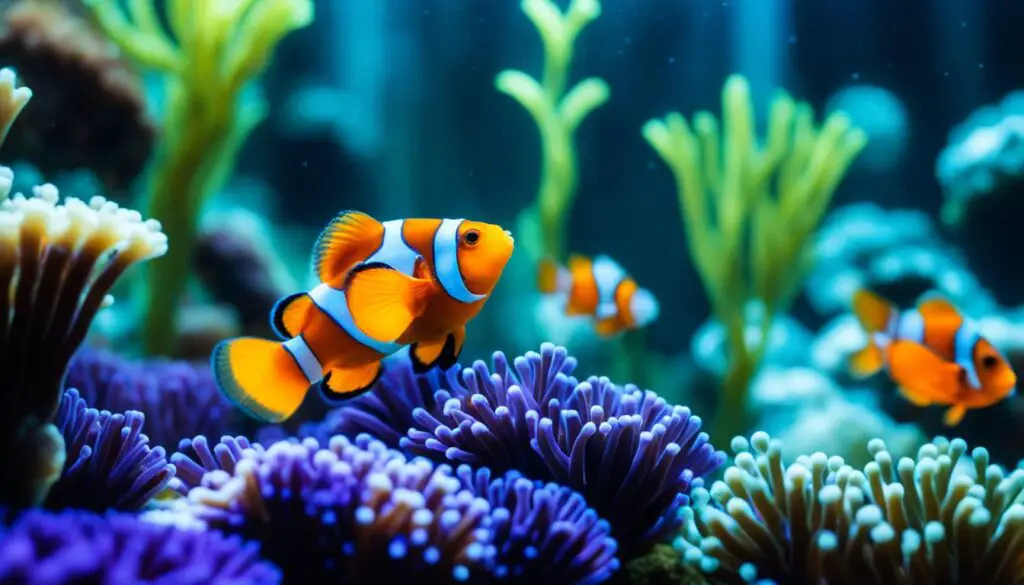
Conclusion
Keeping algae under control in your clownfish tank is critical for your fish’s health. You can do this by keeping the water clean, ensuring the right amount of light, and making sure the water moves enough. Also, controlling how many nutrients are in the water and stopping algae from getting in helps a lot.
It’s vital to always watch and take care of your tank. This keeps it from getting covered in unwanted algae. A happy tank means happy clownfish.
Follow some key steps to make your tank a great place for your clownfish. Doing this not only makes your tank look better but also keeps your fish healthy. Too much algae can lower oxygen levels and make the water unhealthy for your clownfish.
Always check and keep your water levels right and your tank clean. If you see algae, deal with it fast. With good care, your clownfish tank will be a joy to watch and home to healthy fish.
FAQ
What factors contribute to the growth of nuisance algae in my clownfish tank?
Several things can fuel algae growth in your clownfish tank. This includes water quality and the state of your rock and substrate. The type of lighting and flow in the tank also play a big role. Plus, how and what you feed your fish matters. It’s key to test the water often and make sure the environment is just right.
How can I control algae growth in my clownfish tank?
To keep algae in check, focus on water quality, the right amount of light, good water flow, and feeding well. Use methods like regular water changes and adding a reactor with GFO or GAC. A refugium or macroalgae can also be useful to manage nutrient levels.
How can I prevent algae from entering and spreading in my clownfish tank?
Nuisance algae can sneak into your tank from different places. You can fight it by carefully checking new fish, having a quarantine tank, and by cleaning up algae by hand often. Keeping your tank clean and dealing with algae right away will stop it from getting serious.
Why is it important to control algae in my clownfish tank?
Keeping algae in line is vital for your clownfish’s health. With the right steps, you can ensure a clean, lovely space for your fish. This matters a lot for their well-being and your enjoyment of watching them.

